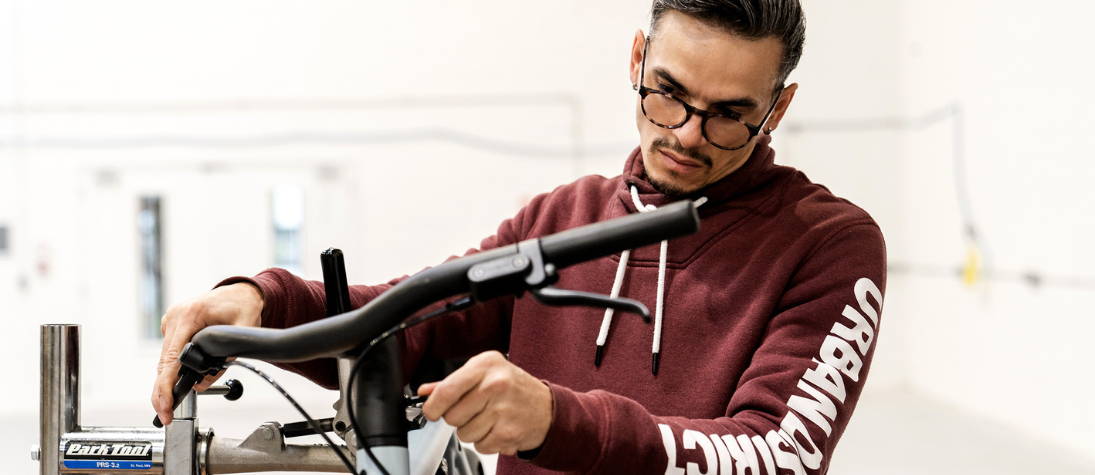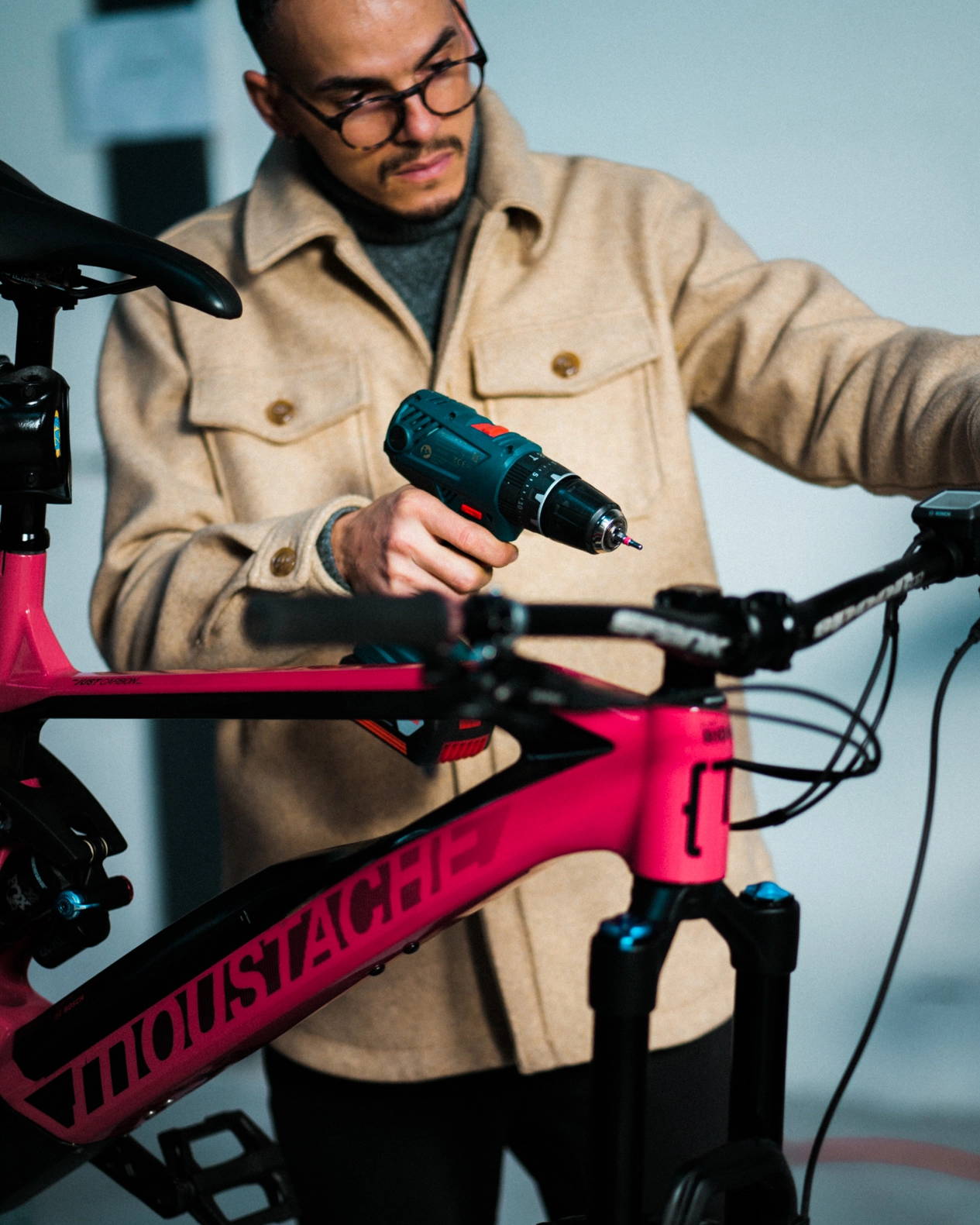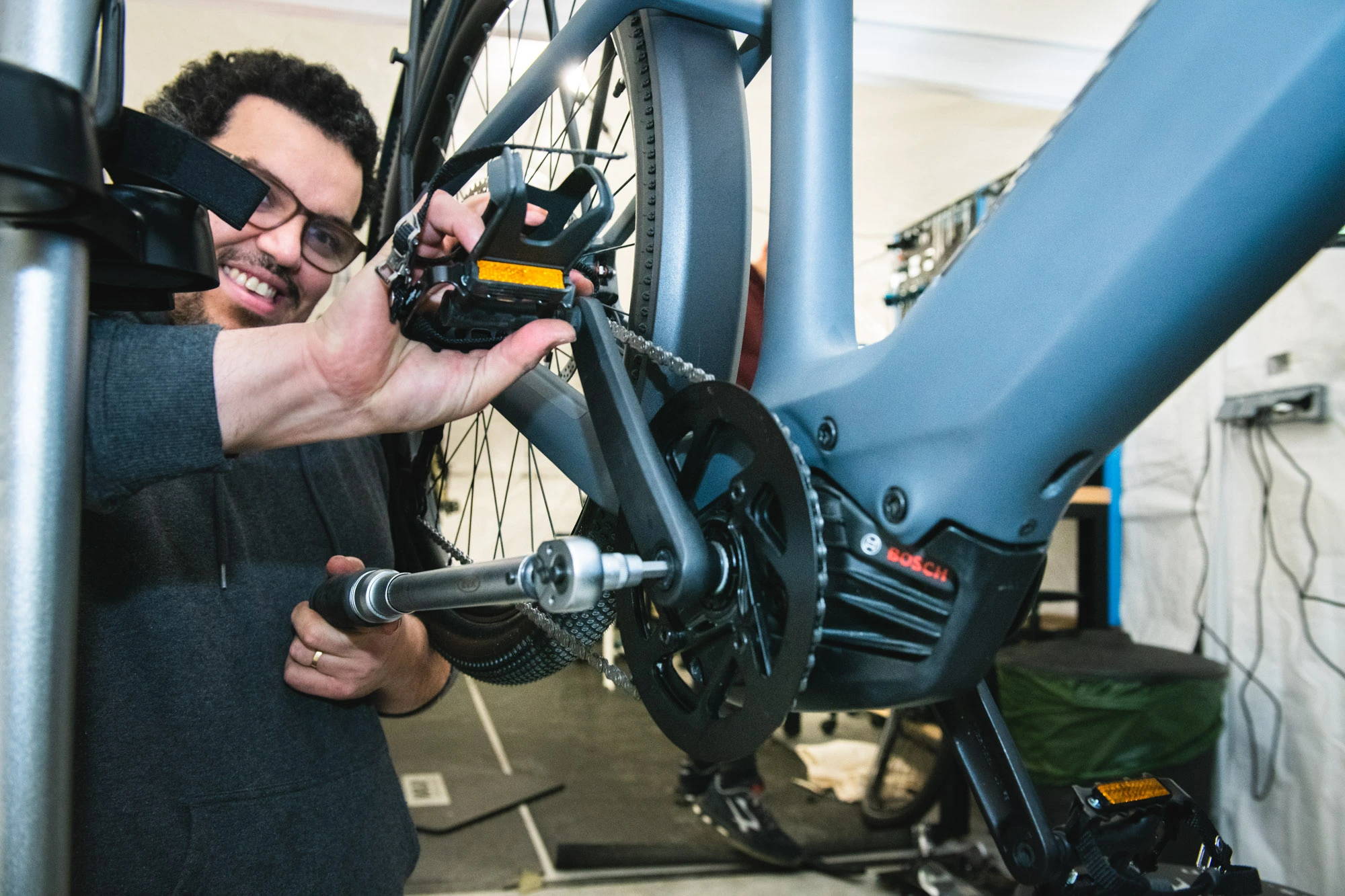Converting a Classic Bike into an Electric Bike: A Complete Guide

When you've got a bike in good condition, converting it to an electric bike may seem an interesting solution. From an economic point of view, it avoids buying a new one new. Ecologically, the idea sounds good too: a kit for converting your bike to electric has a smaller carbon footprint than manufacturing a new bike. Besides, just because you want a little boost when the going gets tough doesn't mean you want to part with your faithful companion...
But how do you go about it? How do you convert a bike into an electric bike? How much does a universal conversion kit for electric bikes cost? Can all bikes become electric bikes? We'll also look at the regulatory implications of converting a bike into an EAB. In this article, we explain everything you need to know about electrifying your bike.
Converting your bike into an electric bike: how does it work?
Conversion kits
Although it's still quite rare, it's perfectly possible to convert a bike into an electrically-assisted bicycle. All you need is a conversion kit.
In fact, it's(at the very least) all the parts that make the difference between a conventional bike and a VAE: motor and battery (obviously), but also sensors, cables, screen and all the nuts and bolts needed for assembly.
Depending on the kit, you'll also find a more appropriate braking system, an adapted crankset, etc.
Electric-assist bikes: choosing your conversion kit
To choose the right electrification kit, use the same criteria as for choosing an electric-assist bike. Essentially, these are: motor location and torque, as well as the battery capacity required for your riding needs.
In terms of location, a pedal motor is generally more efficient because it relies on power sensors directly on the crankset. It will therefore deliver a power proportional to your own, giving an impression of fluidity. What's more, it's closer to the center of gravity, which makes for a more balanced bike.
Conversely, a rear-wheel or front-wheel motor will deliver less linear power, which can sometimes be surprising.
To put it simply, torque is your engine's thrust capacity. Above 80 Nm, it's a powerful motor. Below 50 Nm, it's a little weak...
Finally, battery capacity will determine your range. With reasonable use, 250 Wh is estimated to cover 80 to 100 km.
These criteria will help you determine which electrification kit is right for you.
In terms of compatibility, the kits generally fit most bikes. So if you don't have an old model, you should be fine...
Is it difficult to convert a bike into an electric bike?
If you're a bit of a handyman and/or know how to carry out a few repairs on your bike, you should be fine. On the other hand, if you're not very handy, it's best to find out where you can have your bike converted to electric in your area.
For those just starting out, manufacturers try to make things as easy as possible for you, by using specific colors or shapes.
Finally, there are also kits that take the form ofan electric wheel. In this case, you don't install a hub motor on your original bike - a new wheel replaces the old one.
Why electrify your bike?

Economic benefits
With prices ranging from 500 euros for an inexpensive electric bike kit to 1,000 euros for more elaborate equipment, this solution is obviously less expensive than buying a VAE.
What's more,electrifying your bike encourages you to give up the car for journeys that seemed too long on a conventional bike. Given the cost of fuel, the conversion kit can quickly prove to be very advantageous from a financial point of view.
Environmental impact
Cycling may not emit CO2, but its design inevitably does. Raw materials, transport, the energy needed to manufacture it... Buying only the electrical components, instead of a complete EAB, conserves huge quantities of resources.
Of course, on the face of it, keeping your bike in its traditional format would be even better for the environment. But as we've just mentioned, we tend to cycle more often and for longer distances when we switch to electric... The car then stays in the garage, and that's really very positive for the environment!
Converting a conventional bike into an electric one: regulatory aspects
Regulations in this area
It's perfectly legal to electrify your bike. However, certain rules (set out in Decree No. 2016-364 of March 29, 2016 on safety requirements for bicycles) must be complied with:
- an electric motor rated at 250 W maximum;
- assistance up to a maximum speed of 25 km/h;
- the need to pedal to activate assistance.

Licensing and insurance implications
If current legislation allows it, converting your bike does have consequences that you should bear in mind.
For example, a bike fitted with a kit is no longer covered by the manufacturer's warranty, nor by that of the professional vendor. In fact, this operation constitutes too significant a modification for the warranty to remain valid.
Another point to bear in mind: if you unfortunately have an accident with your (now) EAB, your insurance company may refuse to cover the claim. In order to be "in good standing" with your insurer, you'll need to have the new version of your bike certified. But this is a very, very expensive operation (much more than an electric bike new), and the service providers who grant homologation are few and far between.
Converting your bike into a VAE: what about safety?
Saving money is all very well. But it doesn't have to be at the expense of your safety!
As we mentioned at the start of this article, the kits come in varying degrees of scope. Some are very basic, while others include a new braking system.
You need to be careful here. With electric assistance, you'll go much faster. Your conventional bike is not a racing bike, so it's not necessarily suited to powerful, repeated braking. Check with a professional mechanic, for example, to make sure it's up to the job.
Generally speaking, with a tenfold increase in power, you're going to put a lot more strain on the overall mechanics. Even if it's compatible with the kit you're thinking of buying, you need to make sure your current bike is in very good condition, to avoid the risk of an accident once you'veupgraded.
Finally, you should be aware that when it comes time to resell, buyers will no doubt be reluctant toacquire a modified bike... Don't think of electrification as an investment that will bring added value.
While it may seem economically and ecologically sensible toinstall a kit on your own bike, in reality it's not as simple as all that. The risk of overloading the mechanics, the skills required to install it, the lack of insurance cover in the event of a problem...
It may be safer to invest in a genuine electric-assist bike designed specifically to take the strain of using an electric motor.
Finally, if you opt for conversion, be careful! Your bike's behavior will be different. Take the time to adapt to its new reactions, by first testing it off-road. Ultimately, knowing how to detect faults on your electric bike can always come in handy!